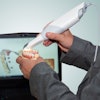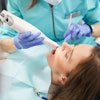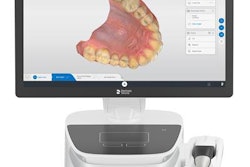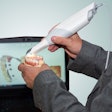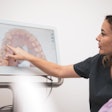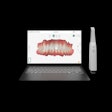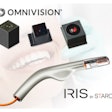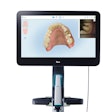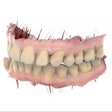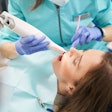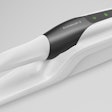
Intraoral scanners are increasingly becoming part of the dental workflow, and for good reason. These versatile devices have been shown to both please patients and save practices time and money, according to a new review.
The new, narrative review looked at the strengths and weaknesses of current- and previous-generation intraoral scanners (BMC Oral Health, December 12, 2017). It included 132 studies published in peer-review journals from 2007 to 2017. The authors concluded that intraoral scanners generally match or outperform traditional impressions.
"Optical impressions have several advantages over conventional impressions," wrote the authors, led by Francesco Mangano, DDS, PhD, from the University of Varese Dental School in Varese, Italy. "Among them, the most important is the reduction of patient stress and discomfort."
Before purchasing your own intraoral scanner, here are five things from the review that you need to know.
1. Scanners save time and money
“Optical impressions have several advantages over conventional impressions.”
Scanners are expensive. The researchers found that an intraoral scanner can cost 15,000 to 35,000 euros (approximately $18,000 to $42,000 U.S.), and some scanners have annual fees for management or to unlock specific file types. In addition, dentists less well versed in technology may to have invest additional time to learn how to the use a new system.
Yet despite these upfront and annual costs, scanners still appear to save clinicians time and money in the long run, the review found. The latest intraoral scanners can take a full-arch scan in less than three minutes, similar to the time required for a conventional impression. However, the digital scans can be instantly sent to the dental laboratory, saving time and money associated with mailing impressions and pouring plaster casts. Dental technicians can also promptly let clinicians know if a scan needs to be redone, saving additional time and money for redoes.
2. They're adequate for most practice needs
Intraoral scanners can also be used for a variety of practice needs. These include diagnosis, patient communication, prosthetic and implant-supported restorations, fixed partial dentures, custom orthodontics, implant mapping, and post and core fabrication. In fact, the only things the literature does not advise the use of intraoral scanners for are long-span restorations on natural teeth or implants and for complete, removable prosthetics.
The authors noted that they would not be surprised if next-generation scanners and software remedied these limitations. They also predicted that software will soon be able to integrate different formats, including intraoral scans and cone-beam CT images, into one virtual patient model for surgical, prosthetic, and orthodontic treatment planning.
3. Open or closed system?
There are two types of intraoral scanner systems: open and closed. Open systems allow clinicians to share intraoral scans with other professionals through widely accepted file types, including stereolithography (STL), object (OBJ), and polygon (PLY). On the other hand, closed systems use only one proprietary file type, and clinicians may need to pay additional money to use other file types.
Open systems are generally advantageous for clinicians because there is no need to pay for specific licenses or to unlock additional file types, according to the authors. This reduces long-term costs, makes sharing files with various professionals easier, and enables clinicians to use multiple manufacturers in their workflow.
However, closed systems may be advantageous for clinicians who are less experienced with software or who prefer to have their entire workflow through one manufacturer. Some manufacturers also offer a closed but completely integrated digital workflow that includes scanning, milling, and chairside solutions.
4. Features to look for
Newer intraoral scanners tend to be more accurate and have wider clinical use than older models, the authors noted. They also advised that clinicians look for scanners with the following features:
- No need for powder
- Fast scanning
- Small and thin wand and tip
- Color images
"The latest-generation devices may have wider indications for clinical use, whereas the oldest have fewer clinical indications," they wrote. "This is an important aspect to be considered before buying an [intraoral scanner], in addition to other features such as the need for opacization, scanning speed, wand dimensions, and possibility of obtaining in-color images."
5. Patients prefer them
Finally, patients prefer intraoral scanners, according to multiple studies included in the review. Patients report that intraoral scanners cause less discomfort and inconvenience than impressions, and optical impressions tend to be especially well-suited for children.
Clinicians can also use digital scans to better educate and communicate treatment options with patients, who in return tend to become more involved in their treatment and compliance. In fact, intraoral scanners can inadvertently become a practice marketing tool.
"Patients are interested in the technology and mention it to their acquaintances and friends, raising their consideration of dental centers equipped with these modern technologies," the authors wrote. "Indirectly, [intraoral scanners] have become a very powerful advertising and marketing tool."
